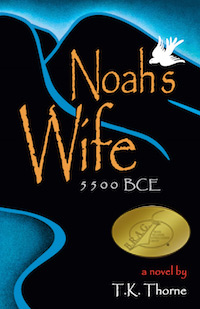

If you’ve watched more than one episode of Star Trek, you know when Captain Kirk, Spock, and Doctor McCoy step into the transporter with a red-shirted crew member, the “red-shirt” is marked for the chopping block. If laser beams spurt about planet-side, or some poisonous alien flower is blooming, red-shirt is doomed. Why? The answer to that question is an important key to making your fiction work and making your reader keep turning pages.
First of all, in a good story, something has to happen, right? If not, you don’t have a plot; you have a still life. The stuff “happening” must affect the character(s), either externally or internally. Character and plot are intertwined. Character drives plot, or at least co-pilots. Plot helps build and show character.
How?
By letting readers “see” how the characters think and feel. Plot tests them. Plot sometimes tortures them! (Tip: If you don’t know much about your character, toss them into the fire and see what they do.)
Alert: Important idea coming up:
In a good plot, cost must be involved. If there is no price to pay, if nothing matters, if there are no consequences to your character’s decisions (whether that consequence is external or internal), then what you have is . . . a boring story. And if you have a boring story, no one wants to read it. And if no one wants to read your stories, you have to go work as a used car salesman. And if you work as a used car salesman, eventually you will sell someone a lemon, and they will come after you. And if they come after you, you will have to tell them how stupid they were, and then you will lose your job and have to run guns for a South American cartel. And if you run guns for a South American cartel, eventually, you will find yourself in the middle of a gunfight. Don’t run guns for the cartel and get in a gunfight. Write good stories.
Hence a red-shirt will die. Winter is coming. And it must arrive. We need it before we can feel the joy of spring (folks in California, notwithstanding). In Star Trek, the main characters had to avoid actual death (at least the kind you can’t recover from) because they needed to be available for next week’s episode or the sequel movie. Although eventually even Kirk bit the dust . . . maybe. Series writers have the same problem. There’s a way around that dilemma, which I’ll get to in a moment.
Even in the fantasy genre where you may be dealing with magic, there must be a price or limitation to the magic. The wielder must suffer or give up something—such as her store of power, her physical strength, or, at the least, have an inherent weakness or encounter a villain more powerful. Superman needs kryptonite or he would be totally boring. It’s okay to have a happy ending, but someone has to pay for that happiness. Does Cinderella go to the ball, fall in love with the prince and live happily ever after? No, Cinderella stays too late, loses her fancy clothes, her carriage, not to mention her shoe, and has to hobble back home to endure her wretched sisters and step-mother, feeling she has lost everything, BEFORE we appreciate the prince finding her and sweeping her away.
So, must someone have to really die? In Dickens’ A Christmas Carol, Scrooge witnesses a future where Tiny Tim dies, but Scrooge changes that future by his actions. The reader, however, has already experienced Tim’s death. It doesn’t matter that it didn’t “really” happen—emotionally, it did. In Tolkien’s Lord of the Rings, readers experience Gandalf’s “death” when he falls into the pit, struggling with the Balor, and we don’t hear from him for several chapters. We agonize at his loss; we suffer; we know he suffered . . . so it was okay to bring him back.
There is a balance in this. If you deal with a terrible tragedy (cost), it creates a space for an upbeat ending. If an inmate, even one who has done bad things (i.e., “Red” in The Shawshank Redemption) has enough sorrows and difficulties (cost), the reader is ready for him to escape his fate and live happily ever after, or at least enjoy the moment. The threat has to be real (and please, not as predictable as red shirts!), but it must be used judiciously. It’s a bold move to kill off beloved characters, and it may accomplish the purpose of putting the risk of disaster into play with . . . whoever is left. If, however, you go over the top with it, you may also risk losing your readers. Can you say Game of Thrones? I leave you to ponder and decide.
T.K. Thorne’s award-winning work includes two historical novels that bring to life the missing stories of unnamed biblical women—Noah’s Wife and Angel’s at the Gate, a feminine perspective on the tale of Sodom & Gomorrah. The New York Post’s “Books You Should Be Reading” list featured her first non-fiction book, Last Chance for Justice, which details the investigation of the 1963 Sixteenth Street church bombing case. A retired police captain, Thorne loves traveling and speaking about her books and life lessons. She writes at her mountaintop home near Birmingham, often with two dogs and a cat vying for her lap. www.tkthorne.com
I’m almost not sure I wanted to know your secrets on writing….but at least now I have reasoning behind your plots. Absolutely love your books, and appreciate each as a special work of artistry.
Tina, thank you for the lovely thoughts!
When I first read something instructive as this from Teresa, I get all sad and depressed. “I’ll never be able to think like this, much less write so inspiring.” Then I get reflective, and appreciative of her efforts on our behalf, and begin to feel guilty about my earlier thoughts. But then by the end, I’ve scooped up a handful of ideas I’m anxious to try, and really glad I took the time to read what she had to say. She may just be a feisty five-footer, but she is full of good advice and thoughts. And I for one, really appreciate the time she takes for us. She stands tall as a writer.
Teresa has such a way with words!!! A way to really understand character assassination!! Even her blogs are page turners. What a talented writer, teacher, and guest lecturer.
Great post and succinct explanation of the difference between “narrating” and “storytelling.” This blog may have saved me from a life of gun-running!
I can’t wait to read, Noah’s Wife! Great post on how characters must drive the plot.
LOL, Kelly! Happy to have saved you. 🙂
Why thank you, Rudolph . . . I think.
Thank you, Fran, for the kind words.
Thank you Stephanie! Would love to hear what you think of it.